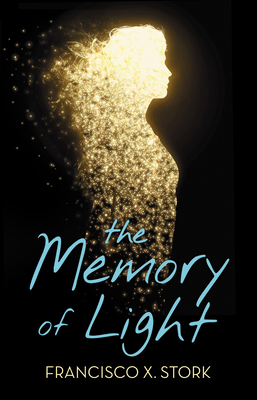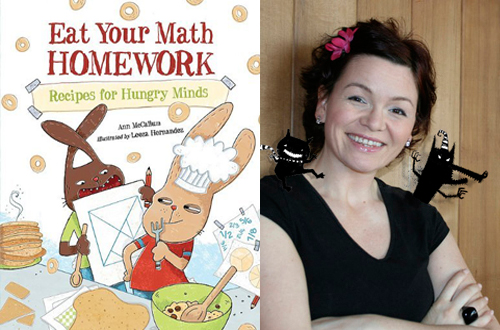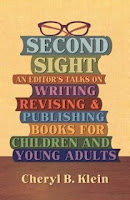
Just finished The Memory of Light by Francisco X. Stork. The exploration of depression is honest and may give words as well as hope to those within the condition. Learning to exist in the midst of the trial is displayed with a tender compassion.
Watch for Vicky's story of crisis and recovery. It may help you find your own memory of light or assist another along the path beside you.
The Memory of Light
by Francisco X. Stork
Arthur A. Levine Books, Scholastic, 2016
Edited by Cheryl Klein
Viewing: Blog Posts Tagged with: cheryl Klein, Most Recent at Top [Help]
Results 1 - 25 of 31
Blog: readergirlz (Login to Add to MyJacketFlap)
JacketFlap tags: Lorie Ann Grover, Scholastic, Cheryl Klein, francisco x. stork, Arthur A. Levine, Memory of Light, Add a tag
Blog: Miss Marple's Musings (Login to Add to MyJacketFlap)
JacketFlap tags: editor, author, Interview, editing, Scholastic, SECOND SIGHT, Arthur Levine, Cheryl Klein, Marcelo in the Real World, THE MAGIC WORDS, A FRIEND FOR FRANCIS, chidlren;s literature, kidl iit, Add a tag
I have been interviewing members of our kid lit community for about four years now, chalking up well over a hundred interviews, and I never tire of them. It has given me a wonderful opportunity to connect with people I … Continue reading
Add a CommentBlog: Galley Cat (Mediabistro) (Login to Add to MyJacketFlap)
JacketFlap tags: Preeti Chhibber, Publishing, Digital, Cheryl Klein, David Allender, Pam Allyn, Add a tag
 Scholastic has launched a new biweekly podcast on children’s books and literacy. Suzanne McCabe, an editor-at-large, has signed on to serve as the host. The first episode of “Scholastic Reads” contains a discussion on “The Magic of Harry Potter.”
Scholastic has launched a new biweekly podcast on children’s books and literacy. Suzanne McCabe, an editor-at-large, has signed on to serve as the host. The first episode of “Scholastic Reads” contains a discussion on “The Magic of Harry Potter.”
Here’s more from the press release: “What sets the Harry Potter series apart from other popular children’s series?…Cheryl Klein talks about her work as continuity editor on the series and shares harrowing stories about keeping the final manuscripts secret. Literacy expert Pam Allyn, Founding Director of LitWorld, weighs in on how Hogwarts and the lessons Harry Potter teaches us can be valuable for educators.”
The second episode focuses on holiday book buying. The third episode will present advice and tips on how to mold children into “super readers.” The fourth episode will feature predictions on the trends of 2016 from children’s literature experts David Allender and Preeti Chhibber. Click here to listen to the premiere episode.
Add a CommentBlog: La Bloga (Login to Add to MyJacketFlap)
JacketFlap tags: poetry, Prose, queer lit, Olga Garcia Echeverria, Cheryl Klein, Anti-gun literature, Bronwyn Mauldin, Pat Alderete, Subcomandante Marcos, The LA Word: Exploding Gun, Wendy Oleson, Add a tag
The first selection is from a ghazal poem written by Bronwyn Mauldin. Every title included in her poem is a gun model taken from an actual gun catalog. The names of these guns speak volumes:
Saddle shorty, Indian bureau rifle.
Lady derringer, ladysmith, Baronesse Stutzen,
Brittany side-by-side, lightweight stalking rifle.
Multipurpose weapon, executive carry,
Professional success, business rifle.
Predator, super X pump marine defender,
Versa max zombie, counter-terrorist rifle.
Dissipator, downsizer, decocker,
Persuader, enforcer, traveler takedown rifle.
This morning I can’t stop thinking of Brisenia Flores, that little girl murdered in Arizona. Minutemen vigilantes broke into her family’s home. A woman and two men plagued by hate, stealing, shooting, killing because they could. In America people love their guns. The weight, the steel, the metal extracted from the earth. The lever of power. The trigger. The trigger happy. He shot her in the face. The little girl who pleaded, "please don’t…"
Blog: Utah Children's Writers (Login to Add to MyJacketFlap)
JacketFlap tags: SCBWI, Kathleen Duey, Cheryl Klein, Ann Dee Ellis, Martine Leavitt, John Truby, The Anatomy of Story, WiFYR, Alane Ferguson, Mathew Kirby, Add a tag
Blog: Utah Children's Writers (Login to Add to MyJacketFlap)
JacketFlap tags: Scott Rhoades, Rachelle Gardner, Cheryl Klein, Add a tag
Blog: Utah Children's Writers (Login to Add to MyJacketFlap)
JacketFlap tags: NaNoWriMo, Cheryl Klein, WYFIR, Add a tag
In his post yesterday, Scott asked who does resolutions.
Maybe I’m an old fashioned kind of guy, but I like making New Year’s resolutions. The start of a new year is a time to reflect on what has been accomplished the last twelve months and how things could be improved. It’s a new beginning on the same old life. A fresh start is a chance to break old habits and establish new ones.
-of course the usual: end to world hunger, lose twenty pounds, fast car, etc., etc.
-and the more doable goals: garage cleaned by 2018, think about what I'm eating once in a while, and what-not.
My Writing Resolutions for 2013
7. Write daily. I do best with a 60-minute a day goal. Some days it doesn’t happen, but the goal itself keeps me there even on those days when you can’t squeeze in an hour.
Blog: Caroline by line (Login to Add to MyJacketFlap)
JacketFlap tags: what I am reading, GONE GIRL, creativity, voice, craft, recommended reading, Donald Maass, reading and writing, Cheryl Klein, reading update, Add a tag
One of the things I think has made Gillian Flynn's GONE GIRL so successful is voice.
Voice is always one of those tricky things. Scholastic editor Cheryl Klein defines it "by using the formula VOICE = PERSON + TENSE + PROSODY + (Diction + Syntax + Tone + Imagination + Details). Defining the imagination of Voice, Cheryl says, '[t]he imagination of a voice sets the range of subjects, images, diction, kinds of and examples of figurative language, and references that the voice can include.'”
Agent and author Donald Maass says voice is "the thing...every novelist already has... . It may be comic, deadpan, dry, pulpy, shrill, objective, distant, intimate, arty or a thousand other things. It comes through in the story that an author chooses to tell and the way in which they choose to tell it."
Here are some quotes I highlighted while reading GONE GIRL. You'll notice they're not big statements on the plot (except for the last one, which sums up the entire story in all its twisted wonder), but tiny observations -- metaphors used to paint a picture of characters, of setting, small things that were fresh and interesting and right. In other words, great examples of voice.
characterization and metaphor:
"They have no hard edges with each other, no spiny conflicts, they ride through life like conjoined jellyfish -- expanding and contracting instinctively, filling each other's spaces liquidly. Making it look easy, the soul-mate thing." (p 27)
setting and metaphor:
"It was the best time of day, the July sky cloudless, the slowly setting sun a spotlight on the east, turning everything golden and lush, a Flemish painting." (p 31)
characterization:
"His shirt wasn't wrinkled, but he wore it like it was; he looked like he should stink of cigarettes and sour coffee, even though he didn't. He smelled like Dial soap." (p 33)
characterization and metaphor:
"He spoke in a soft, soothing voice, a voice wearing a cardigan." (p 199)
and the quote that sums up the entire crazy ride:
"Our kind of love can go into remission, but it's always waiting to return. Like the world's sweetest cancer." (p 392)
Have you read GONE GIRL? What were your impressions? Any other authors or books that get voice just right?
Blog: Caroline by line (Login to Add to MyJacketFlap)
JacketFlap tags: verse novel, Cheryl Klein, shrunken manuscript, novel-in-verse, book mapping, visual representation of a story, quilts, revision, Darcy Pattison, Add a tag
My most recent verse novel manuscript is told in two voices. Without giving too much away, I'll say it's a story of friendship forged in the midst of hostile circumstances. For most of the story the friends, Alis and Kimi, aren't together.
Working with author Darcy Pattison's idea of a shrunken manuscript, editor Cheryl Klein's idea of a book map, and my verse novel as quilt metaphor, I created what you see below.
Blog: Hazel Mitchell (Login to Add to MyJacketFlap)
JacketFlap tags: pen and ink, children's illustration, ink, Harold Underdown, cheryl klein, Hazel Mitchell, grayscale, dipping pen, profile pic facebook, creating a profile picture for facebook, nib pen, Add a tag
This week I got to tackle drawing a profile pic for facebook. No, not for me, for a friend.
If you're in the Kidlit world you may guess who it is.
Here's the first one.
It was too realistic and therefore wouldn't look well on the small profile on Facebook.
So I tried another technique, much freer with ink dipping pen.
I gave the last image grayscale washes in photoshop.
If you hadn't guessed the subject is Harold Underdown. You can see which image he finally used on his Facebook page at this link .... https://www.facebook.com/harold.underdown
Toodles!
Hazel
On the Bedside Table:
'Second Sight' by Cheryl Klein
Blog: Creative Chaos II (Login to Add to MyJacketFlap)
JacketFlap tags: cheryl klein, agent, scbwi, new york, editors, conference, Add a tag
If for some reason you missed the tumblg,tagging and tweeting from the SCBWI Winter Conference in New York City, pull on your riding boots for the conference round up.
In this corral over here we’ve got we’ve got the VIP cocktail party Friday night. Agents, editors, and art directors schmoozed and enjoyed “Artisian Cheese Displays,” after their hard day at work. I spoke to some of those but also rubbed elbow with the assistants who told me that things had been pretty quiet. That must mean that they’ve recovered after the December lull, and it is prime time to start subbing again.
Over here, we’ve lassoed some industry professionals. This group: Jean Feiwel, Barbara Marcus, Nancy Paulsen, and Rubin Pfeffer, is chock full of historical knowledge about the publishing industry having built Scholastic to what it is today. Now they are at MacMillan, Penguin, and East West Literary. They discussed their impressions on the present and future children’s book industry and brought us some new vocabulary. “E-tailers” are purveyors of e-books, “Discoverability” is the chance the consumer had to find your book in the millions that are out there. This used to happen through indie bookstores when the awesome retailer hand sold your book. This panel mentioned that with the demise of Borders, indies have actually had their best season in years and that the support of all of us is really helping. (Shop local.) “Transmedia” is the addition or transportability of your content into other media formats.
Throughout the weekend, speakers agreed that publishers are moving towards more commercial, hard-cover best sellers, and that these best sellers allow them to publish the midlist. High concept is definitely on their mind. This idea was repeated by the agent panel on Sunday with the caveat that you have to have a “hook.” This doesn’t mean that you need a paranormal YA to get published. Agents Regina Brooks, of Seredipity, and Ken Wright, of Writer’s House, explained that publishers are always thinking: “Where is this book going to go? How are we going to get it there? How is the author going to get it there?” Certainly this is marketing and Regina Brooks has even added a Social Media strategist to help her authors develop their online presence. Ginger Knowlton spoke about the many web related links that she checks in on each day so that she can be in the loop about publishing developments. Note: you do not have to read all of these and if you do- you will never write/draw again. Here they are:
PW Marketplace
PW Lunch
PW
When we weren’t in the Ballroom, we were moseying into the breakout sessions. My favorite was the revision workshop with Cheryl Klein. If you went to that session, she posted the links that she mentioned at her own roundup. Yee-Haw!
At the Saturday night hoedown aka the Gala Dinner, the tables were arranged by region and I was thrilled to meet some of the Northern New Englanders who showed up. We ambled away from our tables to join the larger group from Massachusetts, Rhode Island and Conne
Add a CommentBlog: The Official SCBWI 10th Annual New York Conference Blog (Login to Add to MyJacketFlap)
JacketFlap tags: revision, SCBWI New York, Cheryl Klein, Add a tag
 Cheryl Klein is the Executive Editor at Arthur A. Levine Books (Scholastic).
Cheryl Klein is the Executive Editor at Arthur A. Levine Books (Scholastic).
The point of revision is re-visioning, helping it to become the book it wants to be.
Three principles of revision: Reality, Clarity, Transparency
Revision in three parts
1. Vision: the big picture, what is your story. Know what the core of it is.
2. Examination: Look at what the book actually is.
3. Action: Get to work.
Cheryl has oodles of advice and techniques to share for revision, reminding the room that if you try them all, you are likely procrastinating. It makes sense then that her first piece of advice is: Know how you work best.
Write the spine of the story in one sentence. This will be useful in elevator pitches and family picnics.
Some important and useful questions when thinking about character:
What is your character's joy?
What is your character's pain?
What does character want?
What would your character do to get it?
Change the font of your book before you read it. The change will make it feel less familiar.
Use a spreadsheet to track information in a manuscript.
Write a synopsis of your book from another character's point-of-view.
Know that you don't have to solve all the problems in your book at once.
Blog: Writing and Illustrating (Login to Add to MyJacketFlap)
JacketFlap tags: opportunity, Second Sight, Leeza Hernandez, Cheryl Klein, children writing, Daniel Nayeri, Illustrator Adam Gustavson, News, Events, Editors, Add a tag
Cheryl Klein, Daniel Nayeri, Adam Gustavson, and Leeza Hernandez will be doing a book signing at the Hyatt Regency at 5:30 pm on Nov. 5th. The books available are listed below:
Editor Daniel Nayeri at Clarion Books will be signing his book, STRAW HOUSE.

Editor Cheryl Klein at Arthur A. Levine will be signing her book, SECOND SIGHT: An Editor’s Talk on Writing, Revising and Publishing Books for Children and Young Adults.

Author/Illustrator Adam Gustavson will be signing the books below.

Author/Illustrator Leeza Hernandez signing her book, EAT YOUR MATH HOMEWORK.

Great time to buy a book for the holidays and a great way to get a few more minutes with a faculty member.
Talk tomorrow,
Kathy
Filed under: children writing, Editors, Events, News, opportunity Tagged: Cheryl Klein, Daniel Nayeri, Illustrator Adam Gustavson, Leeza Hernandez, Second Sight
 0 Comments on Editor/Author Book Signing as of 10/30/2011 10:30:00 PM
0 Comments on Editor/Author Book Signing as of 10/30/2011 10:30:00 PM
Blog: Writing and Illustrating (Login to Add to MyJacketFlap)
JacketFlap tags: News, Events, Editors, opportunity, Second Sight, Cheryl Klein, children writing, need to know, Conferences and Workshops, one-on-one critique, Mentoring Workshop, Add a tag
 On the afternoon of November 5th, we are having a Craft Day and booksigning with editor Cheryl Klein from Scholastic/Arthur A. Levine. Cheryl will conduct a two hour writing class with members, followed by a booksigning of her new book SECOND SIGHT. This will be offered free to any SCBWI member. Space is limited, so you will have to sign up to reserve a spot and at some point we may have to close the doors. Anyone who wants to stay and have dinner with Cheryl after the booksigning can do so, but dinner is not being offered for free.
On the afternoon of November 5th, we are having a Craft Day and booksigning with editor Cheryl Klein from Scholastic/Arthur A. Levine. Cheryl will conduct a two hour writing class with members, followed by a booksigning of her new book SECOND SIGHT. This will be offered free to any SCBWI member. Space is limited, so you will have to sign up to reserve a spot and at some point we may have to close the doors. Anyone who wants to stay and have dinner with Cheryl after the booksigning can do so, but dinner is not being offered for free.
The following day, November 6th, Cheryl will participate in our Mentoring Workshop and do one-on-one critiques along with three other agents and editors that attend. At the same time, we will have our semi-annual Illustrators’ Day with two Art Directors.
It is all taking place at the Hyatt Regency in Princeton, NJ. I will be posting more info about Cheryl’s class, the discount price to stay overnight at the hotel, and price of November 6th programs. I will announce other agents and editors as I confirm them and provide all the details after the conference. I just wanted you to know so you could save the date.
Hope you find this exciting. It is a way to reward you for supporting the NJSCBWI.
Thank you!
Talk tomorrow,
Kathy
Filed under: children writing, Conferences and Workshops, Editors, Events, need to know, News, opportunity Tagged: Cheryl Klein, Mentoring Workshop, one-on-one critique, Second Sight
Blog: Musings of a Novelista (Login to Add to MyJacketFlap)
JacketFlap tags: Writing, characters, Second Sight, Cheryl Klein, Carrie Ryan, Dark and Hollow Places, Add a tag
You know that feeling you get when you start reading a book and you just connect to it so well? It’s that same connection and empathy that compels us to revisit our favorites — the book that’s dogeared and has paragraphs that you know by heart.
As I reader, I didn’t think about the reason why I loved a book so much. I just knew that is was a favorite. Now that I’m a writer, I always try to find the strings attached behind the words. The craft behind the connection.
And one thing that makes a good book to me is emotion. It’s that connection with the character. And if a writer can do that then that writer is well on her way to making a good book.
I have tons of new craft books that I just can’t wait to start reading after Operation 50/50. I did read the introduction of one of them, Second Sight by editor Cheryl Klein. I had the pleasure of attending her revision workshop at the 2010 Springmingle Conference and this is what she had to say about what makes a good book:
“I think good fiction books (good art in general) create a deliberate emotion in the person experiencing it [...] The emotion is achieved authentically through immersing us in the character’s lived experience, not through cheap manipulation.”
And although I do loves a good plot, adding the emotion dimension is a bonus. A good example is a book I’m currently reading, The Dark and Hollow Places by Carrie Ryan. What has kept me coming back to this trilogy is not the awesome zombie apocalypse and the dark world but the emotion. It’s not all blood and gore — it’s also about connecting with the characters and how they are dealing not only with the need to survive against unrelenting zombies but also their inner conflicts, doubts, fears, and desires. Emotions that are universal.
For me, Emotion = Good Book. And this is coming from a plot chick. Ha.
What about you? Are you reading a book right now or have a favorite book that connects with you through emotion? Would love to hear about some of them. :)
Blog: Writing and Illustrating (Login to Add to MyJacketFlap)
JacketFlap tags: How to Revise, Book, Editors, revisions, Scholastic, How to, Cheryl Klein, children writing, Senior Editor, Add a tag
 Cheryl Klein started her editorial career in 2000 when Arthur A Levine at Scholastic hired her. She is still with Arthur today as Senior Editor.
Cheryl Klein started her editorial career in 2000 when Arthur A Levine at Scholastic hired her. She is still with Arthur today as Senior Editor.
In January 2005, Cheryl started her well-known blog, followed by creating a web site the following November. Both helped her delevelop an online audience.
Once she started running talks online, people began to ask her about when she was going to write a book. With four years of advice behind her, she started seriously thinking about using the material for a book in spring 2009.
On July 1, 2009, Cheryl posted on KickStarter.com, a Web site devoted to raising funds for creative projects. She figured she would need to raise $2000 to print 500 copies of her book and decided KickStarter would be a good way to see if her online support and following would translate into support for a physical book. She then announced her idea on her blog and on Twitter.
KickStarter was newly launched, and mine was the earliest publishing project. She raised the money in nine days, and by September had raised $3200 and I ended up printing 2000 copies of Second Sight. Two years later she has self-published her book, Second Sight: An Editor’s Talks on Writing, Revising, and Publishing Books for Children and Young Adults.
Second Sight is largely composed of Klein’s presentations at writers’ conferences and other venues, the self-published paperback (released by her own company, Asterisk Books), discusses such topics as devising terrific first lines, writing a strong picture-book manuscript, finding the emotional heart of a story, building characters, and bolstering plot.
Click here to purchase from Amazon You’ll have to order it, since they are out-of-stock right now.
Talk tomorrow,
Kathy
Filed under: Book, children writing, Editors, How to, revisions Tagged: Cheryl Klein, How to Revise, Scholastic, Senior Editor















 I found this picture on agent
I found this picture on agent 

The experts are guides. They are experts for a reason, and it's wise to heed their advice. In the end, though, you are writing YOUR story, and need to do what feels best for the story.
Ditto what Scott said. He's a pretty smart guy!